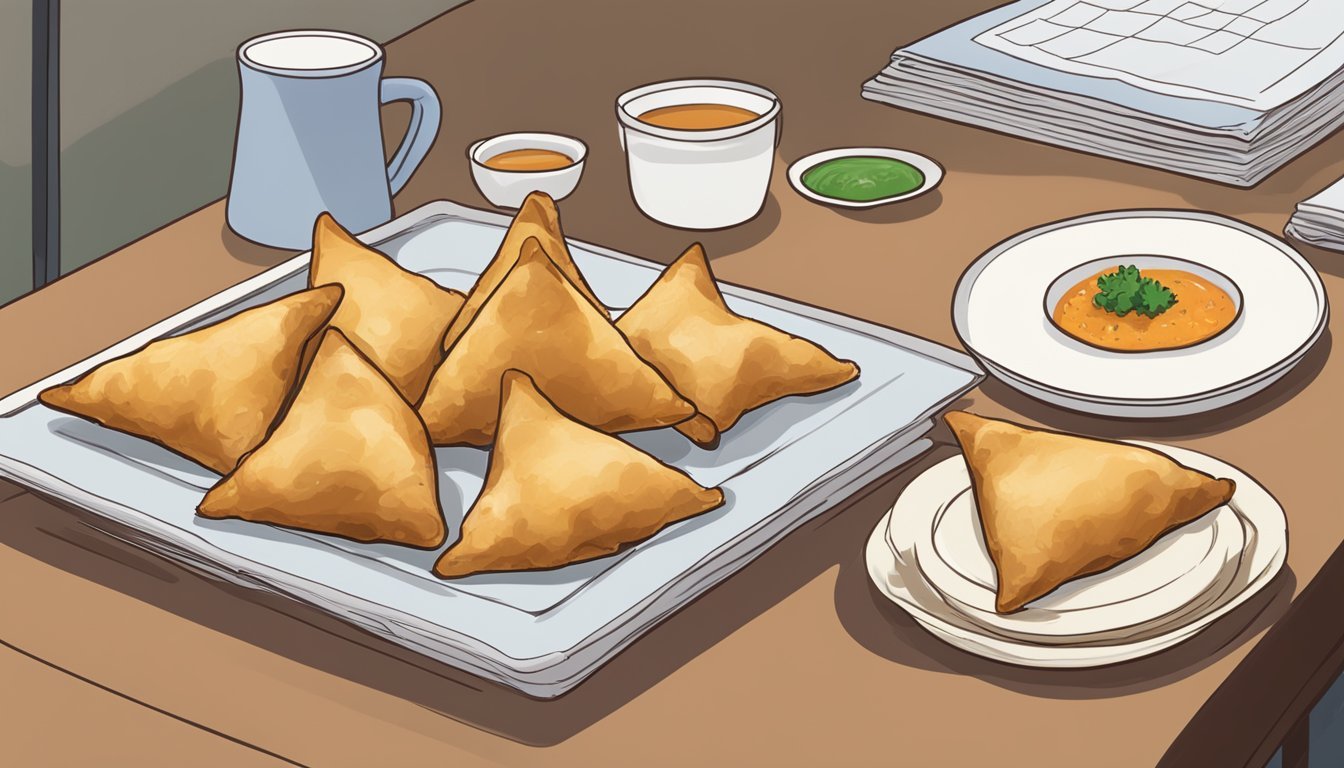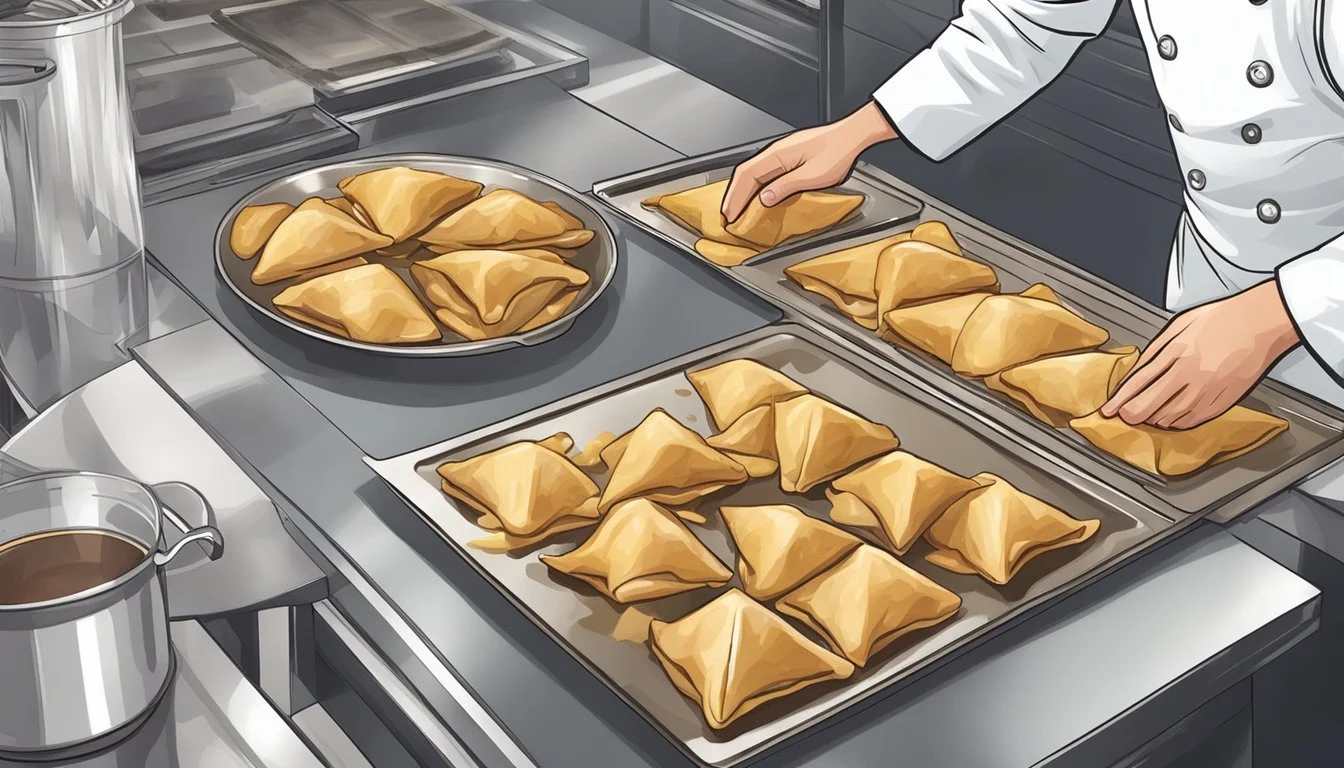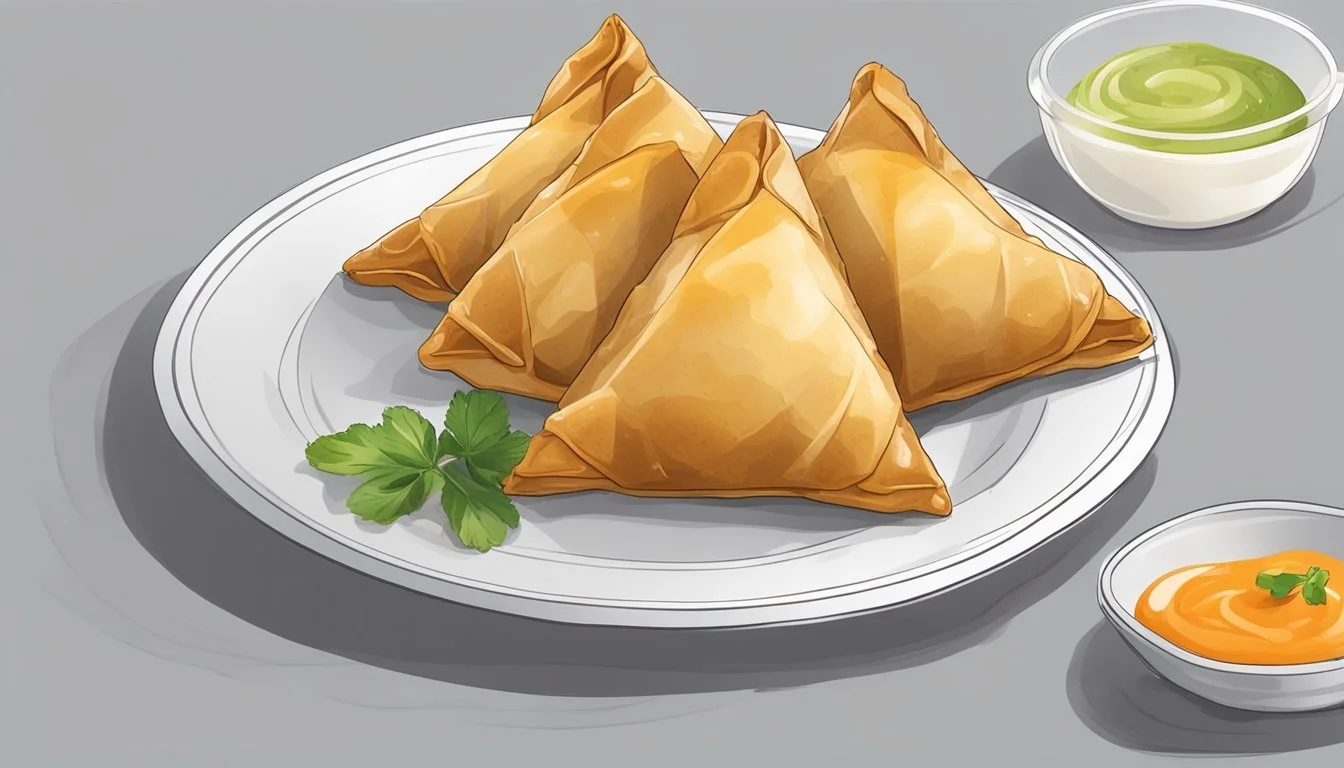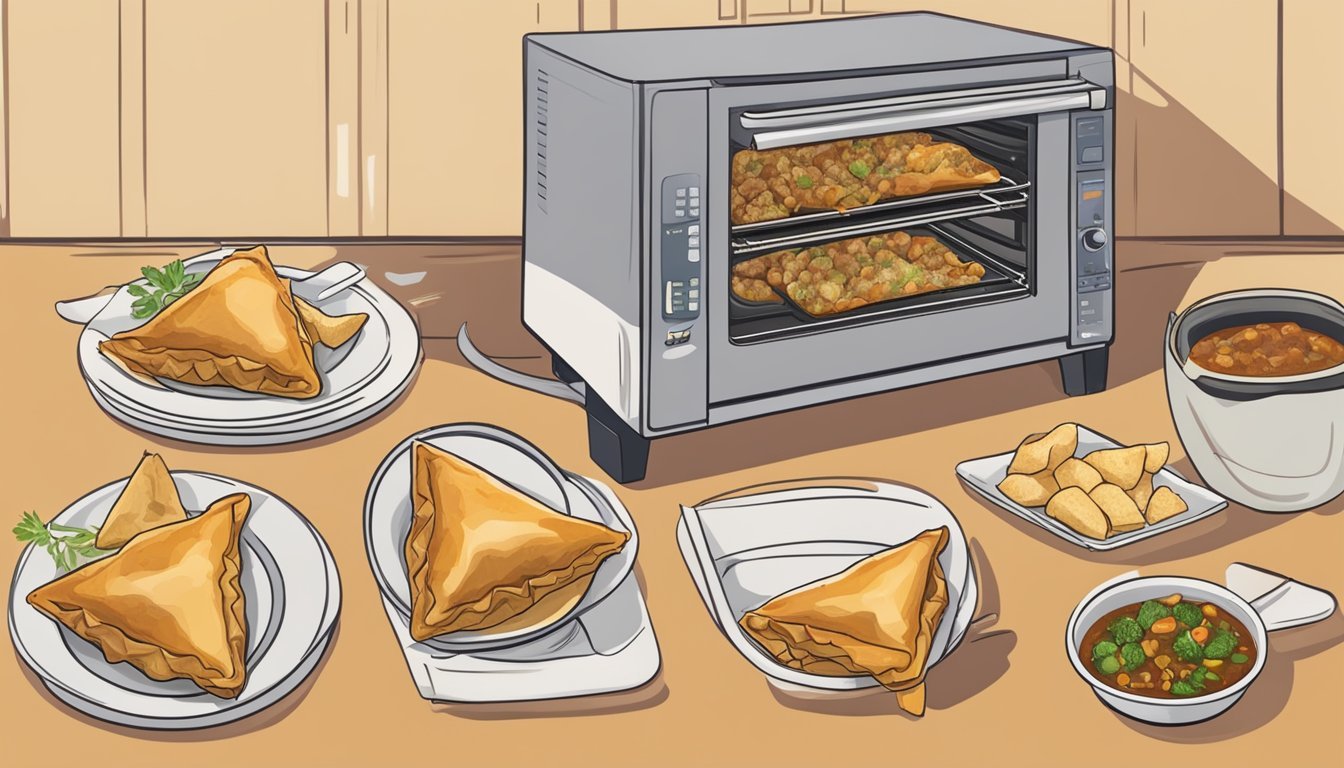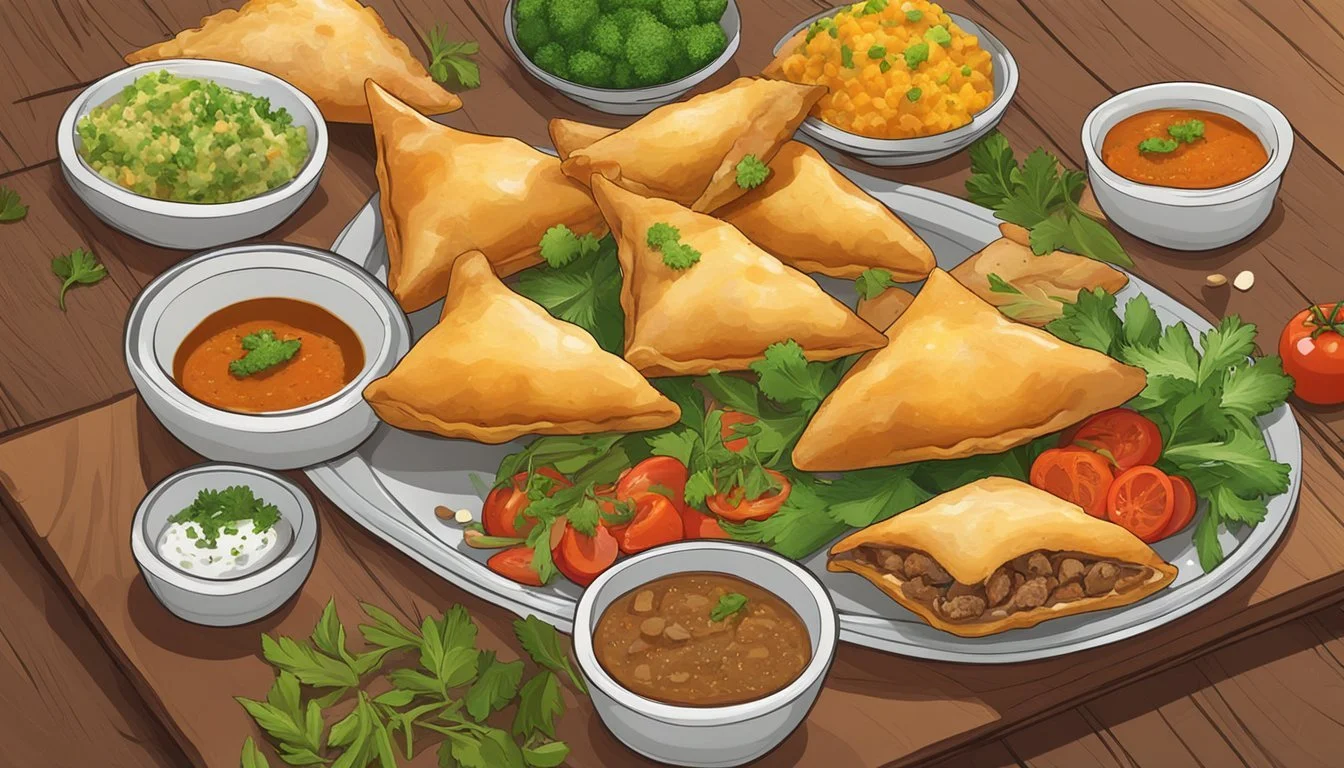How Long Do Beef Samosas Last?
Storage Tips and Shelf Life
Beef samosas are a delightful Indian appetizer that many enjoy for their crunchy exterior and savory meat filling. These tasty snacks can conveniently be prepared in advance, but like any food, they come with a shelf life. Cooked beef samosas can last for about 3-4 days when stored properly in the refrigerator. This ensures they remain safe to eat and retain as much of their original flavor and texture as possible.
Keeping them in an airtight container in the fridge helps prevent them from drying out or absorbing other odors. For those who wish to extend the samosas' lifespan, freezing is also an option. Frozen beef samosas can last for up to 2 months, making them an excellent option for meal prep or hosting get-togethers.
When it's time to reheat the samosas, using an oven at 350°F for about 5-10 minutes will bring back their crispiness. If frozen, extend the reheating time to 15-20 minutes at 375°F. These methods ensure that your beef samosas are perfectly warm and enjoyable as if freshly made.
Overview of Beef Samosas
Beef samosas are a popular savory pastry found in various cuisines, including Indian, Middle Eastern, and Central Asian dishes. They feature a spiced beef filling encased in a crisp, flaky pastry.
The filling typically incorporates minced beef cooked with an aromatic blend of spices such as cumin, coriander, and chili powder. Sometimes ingredients like garlic, ginger, onions, and peas are added to enhance the flavor and texture.
To prepare the pastry, a mixture of flour, water, salt, and a bit of oil is kneaded into a dough. This dough is then rolled out and cut into small circles or squares to wrap the filling. The samosas are either deep-fried to achieve a golden, crunchy exterior or baked as a healthier alternative.
Traditionally, beef samosas are enjoyed as appetizers or snacks. They are often served with a variety of chutneys and dipping sauces, such as mint or tamarind chutney.
In a culinary context, samosas are appreciated for their versatility. Chefs may modify the beef filling with regional spices or additional ingredients. This adaptability has contributed to their widespread popularity across different cultures.
Ingredients and Variations
Beef samosas feature a variety of ingredients that contribute to their distinct flavor and texture. Understanding the elements and possible changes allows for numerous adaptations based on preferences and dietary needs.
Common Ingredients
Ground Beef forms the base of traditional samosas, providing a rich and savory filling.
Potatoes are often added for texture and bulk. They should be boiled and diced or mashed.
Onions and Peas are common, adding sweetness and color.
Garlic and Ginger are minced to balance the beef's richness.
Garam Masala, Turmeric, Cumin, Coriander, and Chili Powder are essential Spices, offering an authentic taste profile.
Flour, Water, and Salt form the dough, sometimes enhanced with Vegetable Oil to improve texture.
Meat Variations
Ground Lamb is a popular alternative, providing a richer and fattier option.
Chicken and Turkey offer lighter, leaner alternatives to beef.
To maintain similar flavor profiles, maintain the same spice mix.
Ground Meat variations may require slight adjustments in cooking time.
Vegetarian Alternatives
For vegetarians, a Potato and Pea filling can replace meat.
Add Carrots and Cauliflower for greater variety.
Lentils or Chickpeas can enhance protein content.
Use the same spice blend including Ginger, Garlic, and Garam Masala to keep the flavor intact.
Additional Flavors and Spices
Additional ingredients such as Green Chilies can add heat.
Fresh Herbs like Cilantro introduce freshness.
Adjust seasoning for personal preference with Salt and Pepper.
Worcestershire Sauce can add a tangy depth.
Some variations may also include Yogurt to add creaminess to the filling.
By understanding these variations and ingredients, one can tailor beef samosas to fit different palates and dietary needs.
Preparing Samosas
To prepare beef samosas, one must focus on making the dough, creating a flavorful filling, shaping and assembling the samosas, and choosing a suitable cooking method. Each step is crucial to achieving the perfect samosa.
Making the Dough
Start with flour, salt, vegetable oil, and water. Mix these ingredients well until a soft dough forms. If needed, adjust with additional flour to get the right consistency. The dough should not stick to the sides of the bowl.
Knead it on a well-floured surface for several minutes. Once smooth, cover it with a damp cloth and let it rest for 20-30 minutes. This resting period is essential for the dough's elasticity, making it easier to roll out and shape.
Creating the Filling
Heat oil in a large skillet over medium-high heat. Add finely chopped onions, garlic, and ginger, cooking until the onions turn soft. Then add minced beef and cook until browned.
Season the beef with salt, cumin, coriander, and chili powder. For additional texture and flavor, include peas and finely chopped carrots if desired. Cook for about 10 minutes, allowing the spices to infuse the meat thoroughly.
Shaping and Assembling
Divide the rested dough into small balls and roll out each ball into a thin circle on a floured surface. Cut each circle in half to form semicircles. Shape them into cones by folding and sealing the straight edge with water.
Fill each cone with the cooked beef mixture, then seal the open edge, ensuring there are no gaps. Overlapping the edges slightly and pressing firmly helps to prevent the samosas from opening during cooking.
Cooking Methods
Deep-frying is a popular method. Heat oil in a deep fryer or large pot to 350°F (175°C). Fry the samosas in batches until they turn golden brown, usually taking a few minutes per side. Drain on paper towels to remove excess oil.
Baking is a healthier alternative. Preheat the oven to 350°F (175°C). Place samosas on a baking tray lined with baking paper. Brush them lightly with oil and bake for about 25-30 minutes, or until they are crispy and golden.
An air fryer offers another healthy option. Preheat the air fryer to 350°F (175°C) and fry the samosas for 15-20 minutes, turning them halfway through, until they are evenly browned and crisp.
Each method offers a unique texture and flavor, allowing for versatility based on preference and dietary needs.
Storing Beef Samosas
Proper storage of beef samosas is crucial for preserving their taste and texture. Whether refrigerating or freezing, follow these guidelines to ensure your samosas remain fresh.
Refrigeration Guidelines
Beef samosas should be stored in the refrigerator if they are going to be consumed within a few days. For best results, ensure the samosas are cooled to room temperature before placing them in the fridge. Wrap each samosa tightly in foil or cling film to prevent moisture loss and avoid contamination from other foods.
Place the wrapped samosas in an airtight container. This added layer of protection helps maintain their crispy texture and prevents freezer burn. Properly stored in the fridge, beef samosas can last 3-5 days. Always check for any unusual smells or visible mold before reheating and consuming.
Freezing and Thawing
For longer storage, beef samosas can be frozen. After letting them cool completely, wrap each samosa individually with cling film or foil. Then, place the wrapped samosas in a single layer inside an airtight container or a freezer-safe bag. This method allows them to be frozen for up to six months.
When ready to use, thaw the samosas in the refrigerator overnight. For reheating, preheat the oven to 350°F (180°C) and place the samosas on a baking tray lined with parchment paper. Bake for 5-10 minutes or until thoroughly heated. This reheating method helps retain the samosas' crispiness and flavor. Avoid microwaving if possible, as it can make them soggy.
Reheating Methods
Reheating samosas correctly is key to preserving their crispy texture and delicious flavor. Below, you will find three effective methods: using an oven, microwave, and stovetop.
Oven Method
Reheating samosas in the oven is recommended for retaining their crispiness.
Preheat the Oven: Set your oven to 350°F (175°C).
Prepare the Tray: Place parchment paper on a baking sheet.
Arrange Samosas: Position the samosas on the parchment paper ensuring they do not touch.
Bake: Place the tray in the oven and heat for 10-15 minutes.
Check: Ensure the middle is hot and the outer layer is crispy.
This method ensures the samosas remain crispy and avoids the sogginess often encountered with other methods.
Microwave Tips
Using a microwave is less ideal for achieving a crispy texture, but it is quick.
Preparation: Select a microwave-safe plate.
Heat: Place the samosas on the plate and cover them with a damp paper towel.
Microwave: Set the microwave to medium power (50%) and heat for 60-90 seconds.
Flip and Continue: Flip the samosas halfway through to ensure even heating.
This method is best for those in a rush, although the samosas may become slightly soft.
Stovetop Technique
Reheating on the stovetop keeps the samosas crispy and is quicker than the oven method.
Heat Pan: Place a non-stick pan over medium heat.
Add Samosas: Place the samosas in the pan, ensuring they do not overlap.
Cover and Heat: Cover the pan with a lid and heat for about 2-3 minutes per side.
Check and Flip: Flip the samosas to ensure both sides are evenly reheated.
Using a non-stick pan and moderate heat helps maintain the crisp exterior and warm filling.
Health and Nutrition
Beef samosas provide valuable nutritional benefits but can vary based on preparation and ingredients. Key factors to consider include caloric information and protein content when assessing their health impact.
Caloric Information
Beef samosas are known for being calorie-dense due to their fried nature and filling ingredients like minced beef and sometimes, vegetables. A typical beef samosa can contain anywhere from 150 to 250 calories per piece.
The caloric content is influenced by the amount of oil used in frying and additional ingredients such as peas and carrots. For those monitoring calorie intake, alternative cooking methods like baking instead of frying can significantly reduce the overall calorie count.
Protein Content
A notable positive aspect of beef samosas is their protein content. Since the filling often consists of minced beef, these samosas can offer a substantial protein supply. On average, one beef samosa can contain approximately 7-9 grams of protein.
Protein is essential for muscle repair, growth, and overall body function. The inclusion of beef makes these samosas a decent option for those needing to increase their protein intake through varied dietary choices.
Serving and Presentation
Samosas can be elevated by pairing them with the right accompaniments and presenting them appealingly on the plate. Details on accompaniments such as dips and plating techniques will enhance both the visual and gustatory experience.
Accompaniments and Dips
Beef samosas are typically served with a variety of dipping sauces. Mint and cilantro chutney offers a fresh, herbal contrast to the rich filling. Raita, a yogurt-based dip seasoned with spices, can provide a cooling effect.
For those who enjoy a bit of heat, a spicy chili garlic sauce or tamarind chutney can be excellent choices. Additionally, squeezing a bit of fresh lemon juice over the samosas just before serving can enhance their flavor by adding a zesty note.
Here are some common accompaniments:
Tamarind Chutney
Chili Garlic Sauce
Raita
Fresh Lemon Juice
Plating Techniques
Plating samosas can transform them from simple appetizers to elegant starters. Arrange the samosas on a large platter, spacing them evenly to avoid crowding. Garnish with fresh cilantro sprigs scattered around the plate for a touch of color.
Stacking samosas in a pyramid shape can add a visual appeal, making them look more inviting. Serving them on a rectangular slate board or a wooden tray can give a rustic, stylish effect.
Consider placing small bowls of dipping sauces on the side, allowing guests to easily access them. Using white ceramics can highlight the golden-brown hue of the samosas, making them the focal point of the presentation.
Cultural Significance
The samosa, a crispy, golden triangle filled with diverse ingredients, holds deep cultural significance across regions.
Originating from Central Asia, the samosa made its way to India by the 13th or 14th century through traders.
In India, samosas became a popular street snack, eagerly consumed by people from all walks of life.
This delightful Indian appetizer is not just food but a symbol of cultural fusion, reflecting historical trade and migration.
During Ramadan, samosas are a staple. They are often enjoyed during Iftar, the meal that breaks the fast at sunset.
The cultural journey of the samosa extends further into the Middle East, where variations continue to be cherished.
Key points:
Central Asia: Origin of the samosa.
India: Transformation and popularity.
Ramadan: Essential during Iftar.
Middle Eastern legacy: Ongoing influence and adaptation.
The samosa's adaptability and rich flavors communicate stories of resilience, migration, and shared culinary heritage across borders.
Tips and Tricks
Successfully preserving the taste and crispiness of beef samosas involves specific techniques and mindful handling of leftovers. Additionally, making slight seasoning adjustments can enhance their flavor.
Achieving Crispy Texture
Reheating samosas while maintaining their crispy texture requires careful attention. Preheat the oven to 350°F (180°C). Place the samosas on a wire rack over a baking sheet to allow even heat distribution. Bake for 10-15 minutes until they are crisp and hot. Avoid using the microwave, as it can make the samosas soggy.
Alternatively, an air fryer can be used to reheat samosas. Set the air fryer to 350°F (180°C) and heat the samosas for about 7-10 minutes. This method ensures a crispy outcome similar to oven reheating.
Handling Leftovers
Proper storage of beef samosas is essential for maintaining their quality. Refrigerate leftover samosas in an airtight container. They can last up to two days in the refrigerator. For longer storage, freeze the samosas by wrapping them in aluminum foil and placing them in a freezer bag. They can be frozen for up to six months.
Before reheating frozen samosas, thaw them in the refrigerator overnight. This helps retain their texture and flavor during reheating. When reheating, ensure the internal temperature reaches a safe level to avoid any risk of foodborne illness.
Seasoning Adjustments
Enhancing the flavor of beef samosas is achievable with simple seasoning adjustments. Salt and pepper are basic but essential components. Taste the filling before assembling the samosas and adjust the seasoning as needed. The inclusion of aromatic spices, such as cumin, coriander, and garam masala, can elevate the flavor profile.
For those preferring a spicier kick, add chopped green chilies or a pinch of red chili flakes. Making seasoning adjustments while preparing the filling ensures every bite is flavorful and satisfying.

